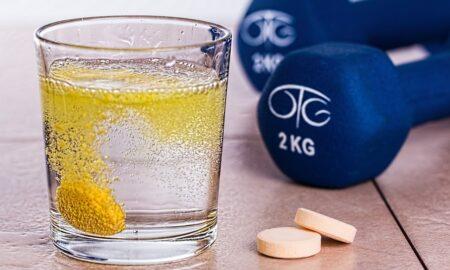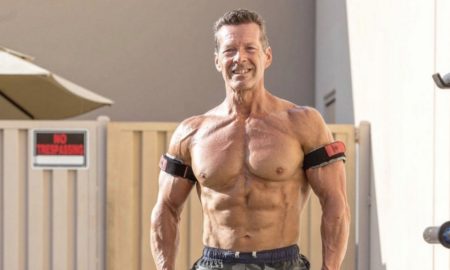


Stop a passerby on the street and ask them to rattle off the names of diseases that come to mind and they’ll probably say something like cancer, diabetes and high blood pressure. All common answers, right? Predictable, too. They certainly rank highly on the Family Feud survey board, but surprisingly, the one disease that kills 100,000 people daily on a global basis fails to make the cut. Why? Most people do not consider aging a disease. You read that correctly: aging.
Aging is a lethal disease, one afflicting each of us beginning in our mid-teens. No one is immune to it. And there are no immunizations, at least not yet.
The disease of aging is degenerative in nature. It is akin to any other degenerative disease affecting the body, like arthritis for example. Through progressive inflammation-mediated destruction of the joints, arthritis results not only in pain, but ultimately dysfunction. Aging encompasses not just arthritis but nearly all diseases that are likely to kill you, barring trauma. Diabetes, hypertension, atherosclerotic heart disease, Alzheimer’s dementia and even cancer are age-related diseases.
COMMON UNDERPINNINGS
I tell my patients, “All diseases are the same.” Why? Because the genesis of aging and age-related disease is rooted in inflammation, free radical/oxidative stress and insulin resistance. Cumulatively, these three wreak havoc at the cellular level.
Aging. Its manifestations are a function of geography. Degeneration of the brain, thanks to free radical damage, primed by bodily inflammation and insulin resistance, is known as Alzheimer’s disease. The same disease in the endothelial lining of the blood vessels? Atherosclerosis. And what does that lead to? Heart attack and stroke, both of which are age-related diseases. Cancer? Same thing. Cumulative DNA damage leads to an unchecked cell line with ruinous consequences.
IT’S NOT ALL NEGATIVE
Aging is an indolent process. It does not occur overnight but over decades. So what should this mean to you? It means that each of you has the potential to affect and in fact slow the progression of the disease. Most people, however, start too late, after their first bout of slurred speech or crushing chest pain. Short-sighted…
The aging process begins in your mid-teens. Acknowledging this, you should consider taking appropriate steps to mitigate its effects on the body. There are several modalities you can utilize to protect your body from the ravages of this disease process.
MORE MUSCLE
The first thing one can do is build muscle. More lean muscle equals a higher basal metabolic rate and lower body fat. Lower body fat equates to less bodily inflammation and therefore reduced disease incidence. Need proof? A landmark study published in 2008 in the British Medical Journal demonstrated the protective effect of exercise on the body. The stronger men in the study exhibited significantly lesser mortality from all diseases, including cancer, relative to those less able to perform on standard strength tests. And this remarkable effect was independent of cardiovascular fitness. Bottom line: Muscle bolsters your resistance to disease.
The best way to build muscle is through intense weight training. Regardless of the chosen regimen, you must incorporate the five foundational movements: squat, bench press, deadlift, chin/pull-up and overhead press.
These basic exercises work by profoundly stressing large muscle groups, thereby generating a robust reparative hormonal response. And the effects of these exercises are not limited to the musculoskeletal system. The cardiovascular system derives benefit, as does the brain. In the context of the latter, researchers have recently proven that hippocampal (primary memory region) volume increases in response to strength training. Yes, train and improve your memory.
QUALITY NUTRITION
Of equal importance to one’s health is optimal nutrition. A sound dietary strategy of high protein, moderate low glycemic index carbohydrates and adequate fats in the form of essential fatty acids (EFAs) is necessary to rebuild the body in response to intense strength training. After all, strength training is at base-level elective trauma—you choose to create it—to the muscles. One’s ability to recover (akin to recovering from surgery) and “come back stronger” as measured by progress in the gym is a function of adequate nutrition and sleep.
Sound dietary practices should be established at a young age in this context. Optimal nutrition will allow one to better cope with stresses (to which we are all exposed, inclusive of training) and thwart the aging process. Poor nutrition will do the opposite. Sadly, as testimony to the increasingly declining health of today’s younger generation and their predisposition to age-related disease, studies have demonstrated evidence of atherosclerotic disease in adolescents.
Aim to buck this trend early on by ridding your diet of inflammatory foods, bolstering your intake of lean protein and consuming large amounts of EFAs. Also, supplement aggressively with anti-oxidants (vitamin C, green tea, mixed tocopherols), anti-inflammatory (omega-3 fatty acids and curcumin) and insulin-modulating agents (resveratrol and chromium). Melatonin is also recommended to promote sleep, highly crucial to this formula for combating age-related disease.
SLEEP
As critical as it is, sleep is often neglected as an essential element to longevity and health. Yet sleep bolsters one’s immune system, reduces cortisol levels, facilitates the formation of memories and allows you to recover from intense workouts. You build muscle not during your training sessions but while you sleep, right? Its importance has come to the forefront due to conclusive evidence for sleep’s role in a variety of disease processes including obesity, coronary artery disease and neurodegenerative diseases, such as Alzheimer’s dementia. Specifically, sleep deprivation and insomnia prime the system for the development of these lethal diseases. Therefore, ensure yourself adequate sleep: seven to eight hours nightly or else risk predisposition to disease and stalled progress.
Shouldn’t continued progress be the ultimate goal in the gym and your life? Strive to be ever better with accurate record keeping. Set goals and achieve them. Prime your mind for success. Before every set. Between every rep. This winning mindset will translate to victories in and outside of the gym. Failure is simply not an option. Just remember, an iron mind begets an iron man.
Sources:
Hahn EA, Wang H-X, Andel R, Fratiglioni L. “A change in sleep pattern may predict Alzheimer disease.” The American Journal of Geriatric Psychiatry. 2013 Aug 13. pii: S1064-7481(13)00233-9. doi: 10.1016/j.jagp.2013.04.015.
Jonatan R Ruiz, et al. “Association between muscular strength and mortality in men: prospective cohort study.” BMJ. 2008; 337: a439.
Mendelsohn A, Larrick J. “Sleep facilitates clearance of metabolites from the brain: glymphatic function in aging and neurodegenerative diseases.” Rejuvenation Research 2013;6:518-523.
Xie L, et al. “Sleep drives metabolite clearance from the adult brain.” Science 2013;342:373-377.





















You must be logged in to post a comment Login